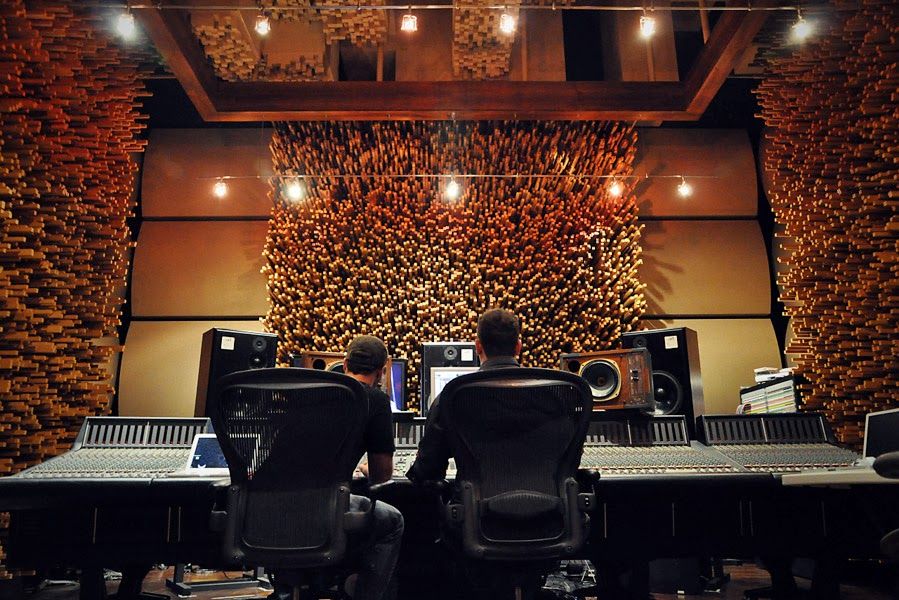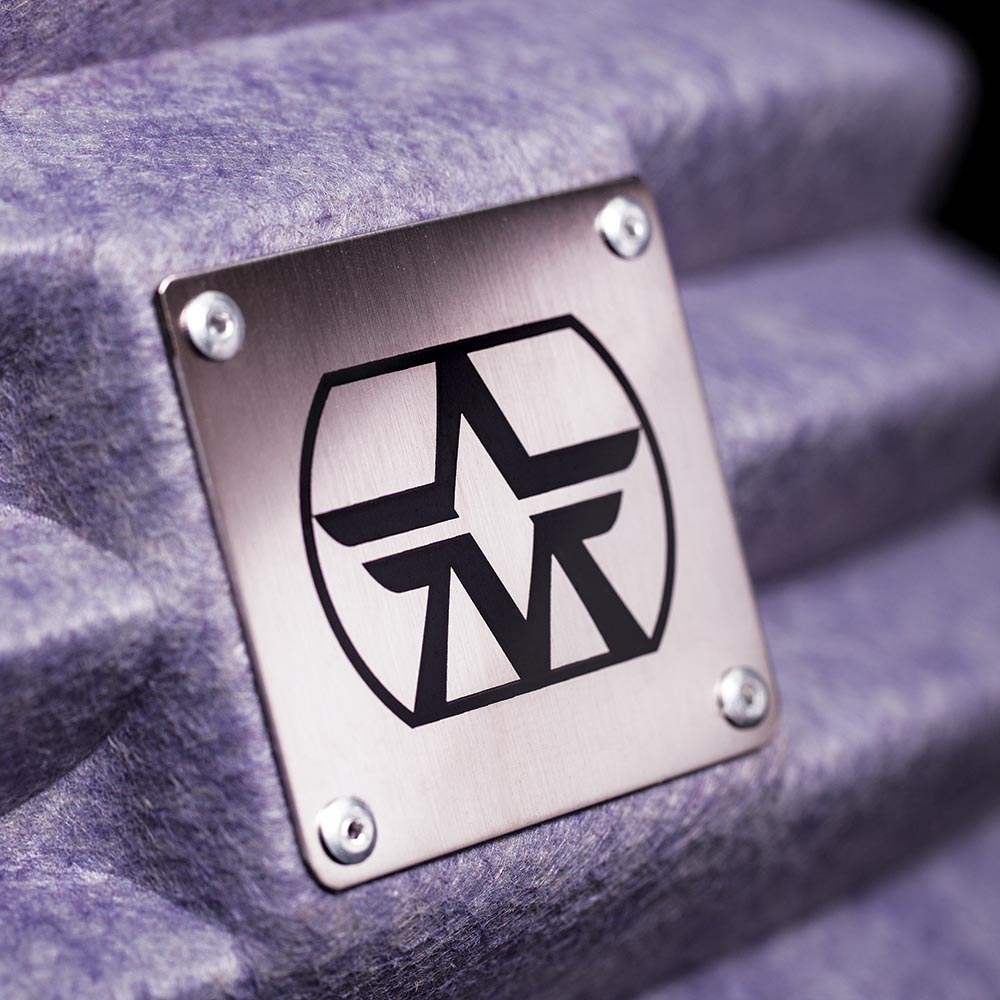Aston Halo – Why diffusion makes the difference
Game-changing products are increasingly rare in the world of audio recording. While the makers of DAWs and plug-ins search for ways to add to their already comprehensive software offerings, hardware manufacturers continue to lean towards variations on old themes.
The Aston Halo portable vocal booth, however, has been universally acclaimed by artists, engineers, producers and the world’s most respected audio press as a true game-changer, addressing perhaps the biggest frustration faced in most DIY studios; the fundamental exercise of getting a decent recording through a microphone. This is the reflection filter and portable vocal booth reimagined from ground up, the first product of is class to offer effective diffusion in addition to absorption.
(Main image above: The famous 'mushrooms' in London's Albert Hall - fibreglass diffusers suspended from the ceiling to reduce echo and diffuse the sound).
Acoustic gremlins and dead spaces
Room acoustics are the bane of many a music producer’s life, with uncontrolled reflections (sound bouncing off walls, ceilings and other surfaces) polluting the direct signal at the microphone, resulting in poor recordings. The world of acoustics is complex and rooted in deep physics, but those of us who are musicians, engineers or producers don’t need to be scientists to hear that our last vocal take sounded boxy, thin or distorted.
Absorbing some of the sound can help, but only in as much as it can increase the ratio of direct to reflected signal the mic receives. The acoustic gremlins of the room, especially the standing waves (sound waves of the same frequency travelling in opposite directions causing unnatural reinforcement or cancellation) remain. Diffusion - the scattering of reflected sound – is far more critical in taming a problematic acoustical space.
 (Image: Audio diffusion taken to the extreme: Studio C at Blackbird Studios in Nashville, designed by audio engineer and inventor George Massenburg, features 138,646 individual sticks of formaldehyde-free MDF wood with no stick being the same size or length - a total of 100,000 lbs. of wood on the walls).
(Image: Audio diffusion taken to the extreme: Studio C at Blackbird Studios in Nashville, designed by audio engineer and inventor George Massenburg, features 138,646 individual sticks of formaldehyde-free MDF wood with no stick being the same size or length - a total of 100,000 lbs. of wood on the walls).
Fix it in the mix?
A totally absorbent acoustic space would, in a sense, remove all these problems, but such ‘anechoic’ environments are difficult and expensive to create and, in any case, the obliteration of one set of problems would only give rise to the new challenge of achieving natural sounding recordings in a completely dead environment. Scientifically accurate audio is just not what humans enjoy listening to, and removing all life and character from the recording environment simply introduces the need to replace it artificially by means of post-processing, such as equalisation and reverb.
A far better goal is to achieve a controlled acoustical space which produces natural sounding and balanced results to start with. Processing plug-ins or hardware then become creative tools, used to tailor and enhance, rather than essential tools for fixing problems. The Aston Halo reflection filter is the most advanced and cost-effective means of achieving great recordings - with no ‘fixing in the mix’ required.
You will have heard engineers and producers speak of ‘great sounding rooms’ and these, not dead spaces, are the holy grail of capturing great audio. For example the famous ‘Motown sound’ was, according to legend, largely down to a room which the engineers got sounding so ‘right’ that amps and drums were left exactly in the same positions, session after session, and moved by musicians’ at their peril.
Few of us will be fortunate to discover a ready-made acoustical cure-all space within our homes or studios, or have the resources to custom build such a facility, and so, through the years since home recording became a reality for the many, numerous workarounds and improvisations have been tried, with rare successes usually achieved by luck more than judgement.
Wings and ribs
Among the rugs, duvets and foam panels (which offer limited absorption and diffusion) there appeared, in mid 2000’s, the original reflection filters. Heavy, perforated metal and foam sandwiches often seen wobbling about on inadequate mic stands. These would offer varying degrees of absorption, meaning less sound bouncing around the room, but with usually only two flat, angled ‘wings’ very little in the way of meaningful diffusion. These devices, cutting edge over a decade ago, and still on the market today in the same form, are also only effective on the horizontal axis, that is, they offer practically no help at all with floor and ceiling reflections.
 The unique ribbed design of the Aston Halo provides both front and rear sound diffusion. This means not only the original signal, but also its reflections, are all scattered regardless of which directions they arrive from. This is in addition to significant and effective absorption, as the Halo features a proprietary surface coating which allows a degree of sound to pass (to be absorbed) while uniformly scattering the remainder.
The unique ribbed design of the Aston Halo provides both front and rear sound diffusion. This means not only the original signal, but also its reflections, are all scattered regardless of which directions they arrive from. This is in addition to significant and effective absorption, as the Halo features a proprietary surface coating which allows a degree of sound to pass (to be absorbed) while uniformly scattering the remainder.
The results are even, natural and characterful, even in the most challenging spaces, as the Halo’s 360 degree coverage ensures floor and ceiling reflections are tamed just as effectively as those arriving at the microphone horizontally.
Lightweight, aesthetically beautiful and highly effective, the Halo is becoming indispensable to an increasing number of leading industry luminaries and the glowing reviews, plaudits and awards keep rolling in; read how the industry has responded to the Aston Halo here:
For more details on the Halo and Halo Shadow click here:
To find your nearest Aston retailer click here: